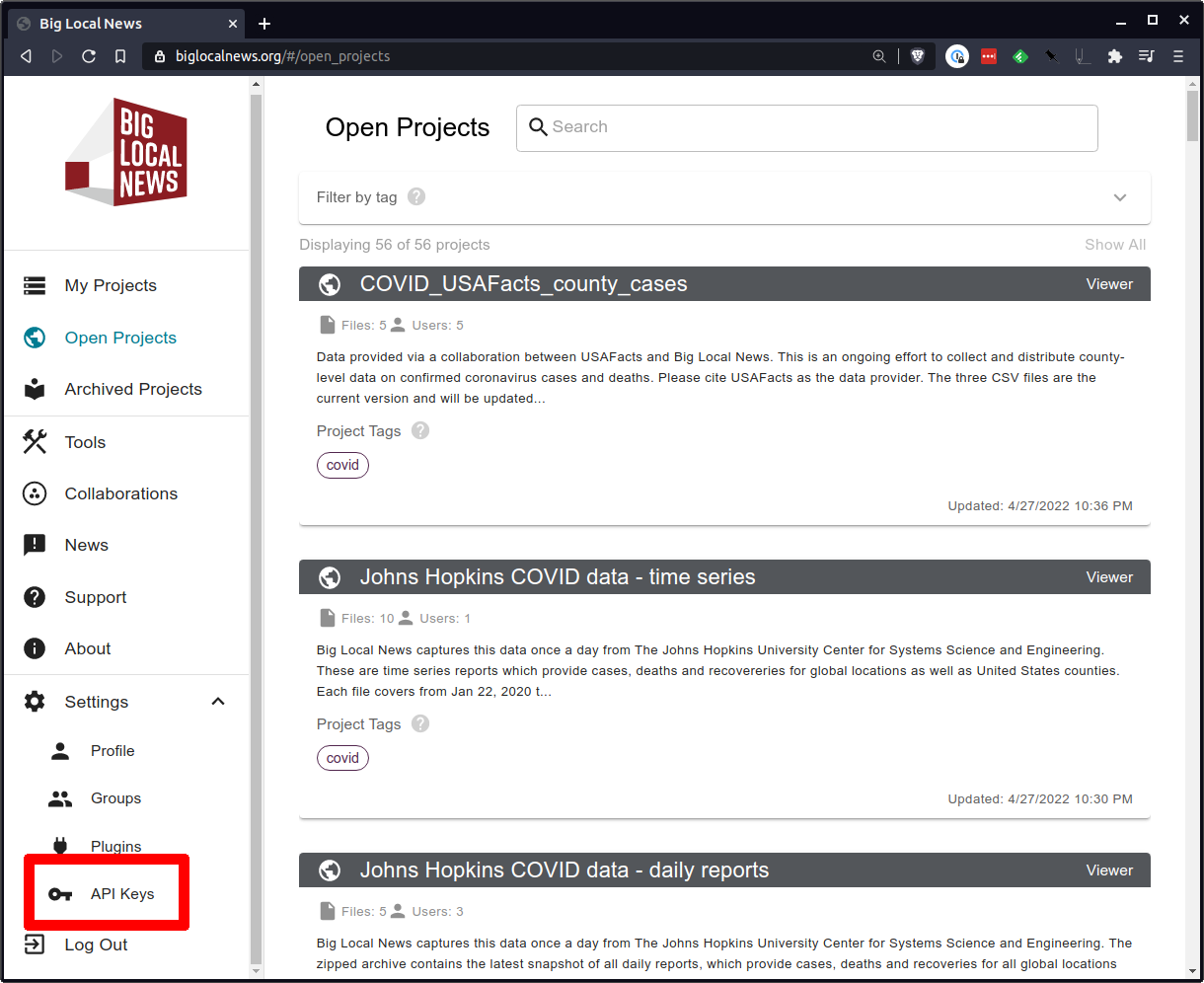pandas extensions¶
The bln package includes extensions for reading and writing to biglocalnews.org with the pandas data analysis library.
They can be easily imported into your environment. First import pandas as usual.
from pandas import pd
Then import the Big Local News package and connect it with your pd module.
import bln
bln.pandas.register(pd)
Your standard pd object now contains a set of custom methods for interacting with biglocalnews.org. This is accomplished by “monkey patching” the pandas library.
Reading data¶
You can read in files from biglocalnews.org as a pandas dataframe using the read_bln function. It requires three inputs:
The unique identifier of the biglocalnews.org project where the file is stored
The name of the file within the biglocalnews.org project
An API key from biglocalnews.org with permission to read from the project.
df = pd.read_bln(your_project_id, your_file_name, your_api_token)
You can find the project id by visiting the project on biglocalnews.org and pulling the long hash from the URL. Here’s the WARN Act Notices open project.

The name of the file can be found in the Files panel. Here’s the Iowa data stored in ia.csv.

You can get an API key by visiting the link in the Settings menu.

If the token is set to the BLN_API_TOKEN environment variable, it doesn’t have to be passed into the read_bln function.
Combine the entire example together and you can access the Iowa data file from the WARN Act Notices project with the following:
import pandas as pd
import bln
bln.pandas.register(pd)
project_id = "UHJvamVjdDpiZGM5NmU1MS1kMzBhLTRlYTctODY4Yi04ZGI4N2RjMzQ1ODI="
file_name = "ia.csv"
df = pd.read_bln(project_id, file_name)
Now you’ve got a dataframe to work with.
df.head()
Company Address Line 1 City ...
0 SSP America, Inc. 5800 Fleur Drive Des Moines ...
1 Premier Linen & Drycleaning 461 West 9th Street Dubuque ...
2 Caterpillar, Inc. 1003 Miller Street Elkader ...
3 General Dynamics Information Technology 2400 Oakdale Boulevard Coralville ...
4 Alorica, Inc. 2829 Westown Parkway West Des Moines ...
The read_bln function will also accept any of the standard configuration options offered by pandas reader functions, like read_csv. Here’s an example using the parse_dates input.
df = pd.read_bln(project_id, file_name, parse_dates=["Notice Date"])
Writing data¶
You can write a file to biglocalnews.org using our custom to_bln dataframe accessor. Like the read_bln method, it requires three input:
The unique identifier of the biglocalnews.org project where the file will be stored
The name of the file to create within the biglocalnews.org project
An API key from biglocalnews.org with permission to read from the project.
df.to_bln(your_project_id, your_file_name, your_api_token)
You can find the project id by visiting the project on biglocalnews.org and pulling the long hash from the URL. Here’s the WARN Act Notices open project.

You can name the file whatever you like. The filenames must end with .csv, .json, .xls, or .xlsx. The extensions are mapped to the appropriate pandas writer function.
You can get an API key by visiting the link in the Settings menu.

If the token is set to the BLN_API_TOKEN environment variable, it doesn’t have to be passed into the read_bln function.
Combine the entire example together and you can upload a data file from your computer to WARN Act Notices project with the following:
import pandas as pd
import bln
bln.pandas.register(pd)
df = pd.read_csv("my-local-file.csv")
project_id = "UHJvamVjdDpiZGM5NmU1MS1kMzBhLTRlYTctODY4Yi04ZGI4N2RjMzQ1ODI="
file_name = "my-uploaded-file.csv"
df.to_bln(project_id, file_name)
The to_bln method will also accept any of the standard configuration options offered by pandas writer functions, like to_csv. Here’s an example using the index input.
df.to_bln(project_id, file_name, index=False)